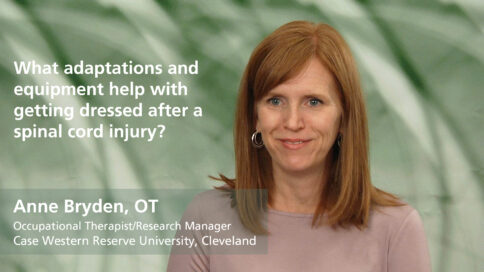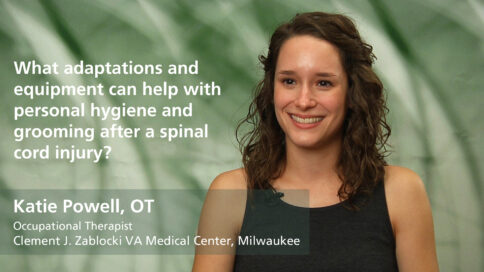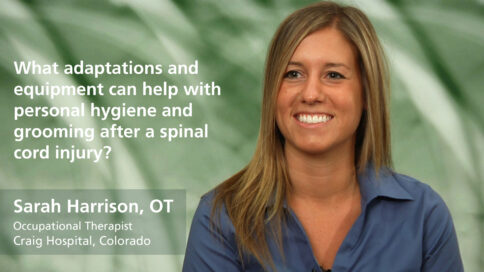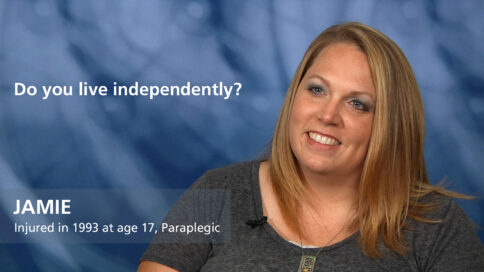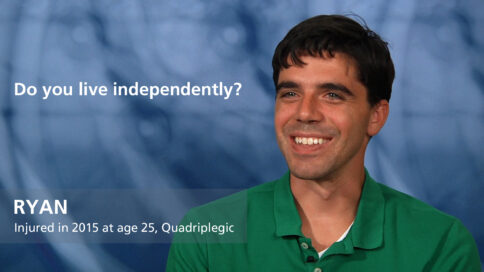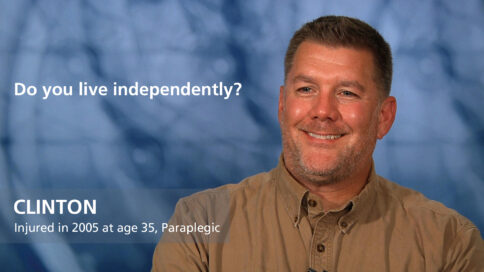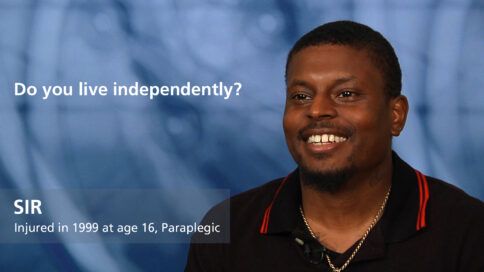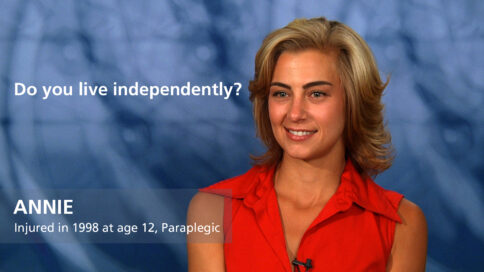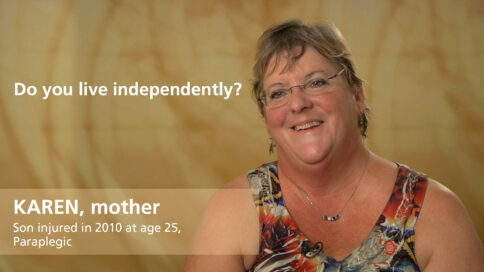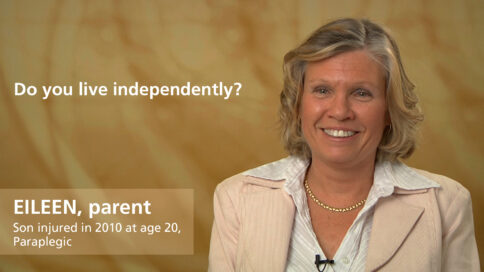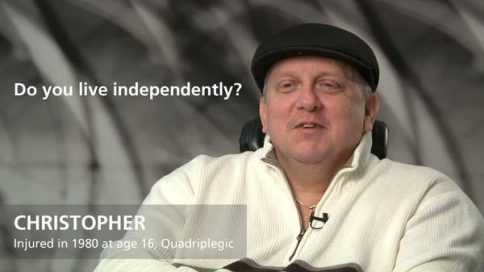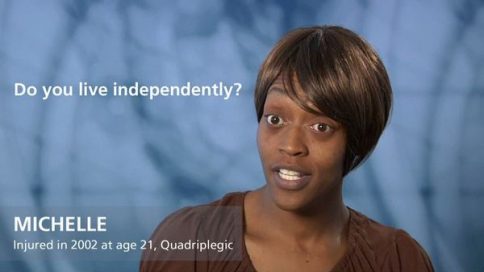What adaptations and equipment help with getting dressed after a spinal cord injury? - Katie Powell, OT
|
|
What adaptations and equipment help with getting dressed after a spinal cord injury? |
|
Katie Powell, OTOccupational Therapist, Clement J. Zablocki VA Medical Center, Milwaukee |
||
| Read Bio | More Videos by Katie Powell | |
|
Share |
||
Transcript
Depending on a person’s level of injury, dressing is one of the first skills I like to look at. And what I’m looking at is do they have the range of motion and the strength that they need to be able to put clothing on? For some people you think before a spinal cord injury, when you put your pants on, generally you lean down and put your feet in. After a spinal cord injury when you can’t stand, we actually transition that task to being able to do that in bed, and so we teach them how to move their legs to be able to get the legs in their pants, and how to move in bed to be able to get those pants pulled up. Then we look at can they get socks on? Do they have the dexterity to do that? Are they able to get their shoes on and tied? If they have issue with any of these tasks, then we look at what equipment could support them. We look at what’s called a reacher, or a dressing stick, to clamp onto their pants to help them reach their feet to get their feet threaded. We look at something we call a “sock aid” where they would put the sock on the equipment and use that to get it pulled up. We look at a long shoehorn or elastic shoe laces, and the list goes on and on. So generally we’re looking at can the person do the task? If not, do we have equipment that can support them in doing so? In terms of being able to get a shirt on, I’m looking at do they have the arm motion to be able to get their arms in the shirt? Do they have the shoulder motion to be able to get it over their head? We look at different shirt options—can someone get a shirt on over their head, but doesn’t have the movement behind their back to get a button-up shirt or sweatshirt on. We also have equipment for upper-body dressing. We have what’s called a “button hook” where if people can’t do buttons and would like to wear button shirts, we teach them how to use this piece of equipment that makes it easier to button. We have a dressing stick that can help them lift a shirt over their head or reach behind their back. So we look at what skills a person has and if the skills they have can’t help them do the tasks, then what equipment could support them in doing so?
Show Less|
|
||
add
What adaptations and equipment help with getting dressed after a spinal cord injury? |
||
Katie Powell, OTOccupational Therapist, Clement J. Zablocki VA Medical Center, Milwaukee |
More Videos by Katie Powell | |
| Transcriptadd | share | |
Depending on a person’s level of injury, dressing is one of the first skills I like to look at. And what I’m looking at is do they have the range of motion and the strength that they need to be able to put clothing on? For some people you think before a spinal cord injury, when you put your pants on, generally you lean down and put your feet in. After a spinal cord injury when you can’t stand, we actually transition that task to being able to do that in bed, and so we teach them how to move their legs to be able to get the legs in their pants, and how to move in bed to be able to get those pants pulled up. Then we look at can they get socks on? Do they have the dexterity to do that? Are they able to get their shoes on and tied? If they have issue with any of these tasks, then we look at what equipment could support them. We look at what’s called a reacher, or a dressing stick, to clamp onto their pants to help them reach their feet to get their feet threaded. We look at something we call a “sock aid” where they would put the sock on the equipment and use that to get it pulled up. We look at a long shoehorn or elastic shoe laces, and the list goes on and on. So generally we’re looking at can the person do the task? If not, do we have equipment that can support them in doing so? In terms of being able to get a shirt on, I’m looking at do they have the arm motion to be able to get their arms in the shirt? Do they have the shoulder motion to be able to get it over their head? We look at different shirt options—can someone get a shirt on over their head, but doesn’t have the movement behind their back to get a button-up shirt or sweatshirt on. We also have equipment for upper-body dressing. We have what’s called a “button hook” where if people can’t do buttons and would like to wear button shirts, we teach them how to use this piece of equipment that makes it easier to button. We have a dressing stick that can help them lift a shirt over their head or reach behind their back. So we look at what skills a person has and if the skills they have can’t help them do the tasks, then what equipment could support them in doing so?
